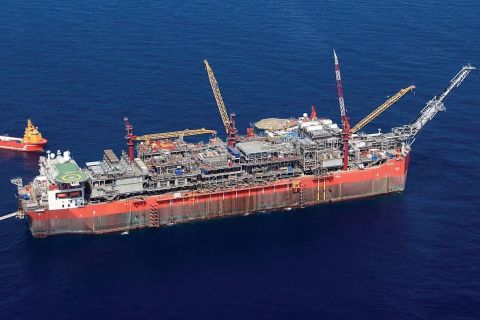Jordan Blum, editorial director, Hart Energy: We're here at Hart Energy's, DUG Appalachia Conference in Pittsburgh, and I'm joined by Douglas Kris, the senior vice president at Diversified Energy. Just to get into it, if I can get you to just touch on differentiated business model at Diversified and kind of the strategy that separates you all from the rest of the E&P space.
Douglas Kris: Sure, Jordan. Appreciate that because it's a great observation. We are different than a lot of the other E&Ps that a number of your viewers are going to see at this conference over the next couple of days, and the U.S. landscape as well. So Diversified really is a reliable energy producer that's focused on a stewardship model. We, rather than focus on drilling wells, we're a hundred percent focused on acquiring existing non-core producing assets from other operators where those assets might have now become non-core to them. We really invest in those assets once we acquire them to operationally improve them, as well as improve the environmental performance of those assets. We really focus as well on the risks involved in the E&P business, which differentiates us from other operators as well. We've eliminated a lot of the traditional risks, commodity price risk. We hedge about eighty-five percent of our production on a year-over-year basis, giving us certainty of cash flows.
From an operational risk, when we acquire these assets, we put them under our Smarter Asset Management program to make them more environmentally sound, as well as efficiently improve the production profile of those assets over time. From a financing risk perspective, we've used an innovative asset-backed securities process for debt financing of a lot of these assets. That's low cost, that provides investment grade investments for those investors and some aspects has an ESG component associated with them. And we've been able to do that really because of the surety of our cash flows and consistency and reliability of our production. And candidly, we've improved and taken a lot of the ESG or sustainability risk off the table. Most recently, our ESG report was awarded the ESG report of the year by a group of judges based in the U.K. and Europe, as well as we are part of The Oil & Gas Methane Partnership, which is a U.N. international emissions program that really is focused on not only improving emissions with what you're doing now, but a path forward to reducing those emissions longer term. So a lot of the traditional stuff that some of the E&P aren't focused on, we are focused on.
JB: You mentioned in your talk, "right company, right time." Can I get you to elaborate on what that means for Diversified?
DK: Sure. So we're, as I tend to think about it, providing solutions for the energy transition. We're providing solutions to these non-core asset sales that really allow us to leverage our production. We're providing solutions to states with the next-level energy company that we've integrated fully into our business, which is a asset retirement company. So we're partnering with a number of the states here in Appalachia, West Virginia, Ohio and most recently Pennsylvania to retire their orphan wells in a cost-efficient and environmentally friendly manner.
JB: Great. And we're here in the top gas-producing basin. Can I get you to touch on two kind of economic developments in the region, which you all are working on?
DK: Yeah, sure. So I mean, as we think about our business and our social license to operate in these areas where our production and our operations are, it's extremely important, not only that we give back, but the economic benefit that we're providing to these regions. When you think about the totality of our operational footprint, we provide over $250 million of tax revenue to the states in which we operate. We've got 1,600 employees under the Diversified model, but over, when you think about the contractors and service providers that we employ, that number scales up to fifty-five hundred or more on any given yearly basis. We provide over $510 million of royalty payments to landowners in those communities in which we operate, as well as when you think about the totality of everything that we do, it really ends up being about a billion dollars of GDP or economic impact to these communities where we operate.
JB: Thank you again so much for joining us here at DUG Appalachia in Pittsburgh. To read and watch more, please visit online at hartenergy.com.
Recommended Reading
TotalEnergies Starts Production at Akpo West Offshore Nigeria
2024-02-07 - Subsea tieback expected to add 14,000 bbl/d of condensate by mid-year, and up to 4 MMcm/d of gas by 2028.
Well Logging Could Get a Makeover
2024-02-27 - Aramco’s KASHF robot, expected to deploy in 2025, will be able to operate in both vertical and horizontal segments of wellbores.
Shell Brings Deepwater Rydberg Subsea Tieback Onstream
2024-02-23 - The two-well Gulf of Mexico development will send 16,000 boe/d at peak rates to the Appomattox production semisubmersible.
E&P Highlights: Feb. 26, 2024
2024-02-26 - Here’s a roundup of the latest E&P headlines, including interest in some projects changing hands and new contract awards.
Remotely Controlled Well Completion Carried Out at SNEPCo’s Bonga Field
2024-02-27 - Optime Subsea, which supplied the operation’s remotely operated controls system, says its technology reduces equipment from transportation lists and reduces operation time.





